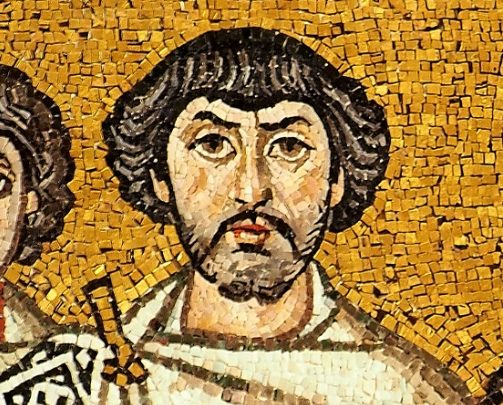
Belisarius is the much underrated military commander of the Byzantine Empire who led the armies of Justinian I in reclaiming enormous swathes of the former Western Roman Empire from northern Africa to the Italian peninsula.
Much of Belisarius’ early military life consisted of lost battles and retreats, particularly along the Persian front and most notably during the battle of Tanurin, during which he and his co-commander Sittas were lured into a trap by equally gifted strategic leaders within the Persian forces.
However, during the series of conflicts with Persia, he and Sittas proved themselves to be successful plunderers of the enemy’s territories, which may have played a part in Belisarius’s subsequent promotion by Justinian I.
In his new position as commander of a Roman army in the East, he, during the Iberian War, led the Romans to a triumphant victory over the Sassanids in the Battle of Dara. The result was that the Persian King Kavad I was led to open peace negotiations with the Byzantines.

Around two years later, in 532 AD, city-wide unrest gripped Constantinople. With Justinian’s reign under threat, Belisarius played a key role in crushing the rebels. Positioning his troops at the exits of the main hippodrome, where the majority of the violent protesters had gathered, he charged down the Emperor’s enemies, slaughtering as many as thirty thousand men and women.
However, Belisarius’ name lives on chiefly because of his military ventures after these early events, which saw him lead Roman armies to victory over the Vandal Kingdom of North Africa in the Vandallic War. He reconquered much of Italy during the Gothic War.
Belisarius’ Byzantine Military Campaigns Which Reclaimed the Western Roman Empire

To North Africa, Belisarius and a handful of other commanders took five thousand high quality Byzantine cavalry, ten thousand infantry and mercenaries, and four hundred Heruli. They also took six hundred Huns and a contingent of Foederati, or non-Roman tribes bound by a treaty to come to the defense of the Romans.
Once the Roman forces had landed on the shores of northern Africa, it was not long before the main conflict, the Battle of Ad Decimum, took place.

The Vandal leader, Gelimer, needed a victory to galvanize his forces against the Byzantine’s much larger numbers, but as Belisarius himself arrived to the battle ground, Gelimer saw his brother Ammatus killed in combat, and, mourning, remained still. He allowed Belisarius to attack his army while it was disorganized.
After this victory, Belisarius marched on Carthage, soon taking command of it, and a number of other North African territories, too.
Rumors began to spread that Belisarius, high on his victories, was planning to rebel against Justinian. Hence, the Emperor presented the great warrior with a choice. He could either continue governing the new territories as official governor, or he could return to Constantinople and be granted a victory.
Belisarius chose to return to Constantinople and receive the triumph, thus proving his loyalty to the Byzantine Emperor for which Justinian not only awarded Belisarius a triumph but also made him consul (member of the senate in the Roman Republic).
The Campaign to Reclaim Mainland Italy
In 535 AD, Justinian commissioned Belisarius to wage war on the Ostrogothic Kingdom of Italy. The king residing there, Theodahad, had assumed the throne by marriage. The supreme ruler of the Ostrogothic Kingdom was the pro-Byzantine Queen Amalasuintha, before Theodahad had her imprisoned and then killed.
Belisarius took four thousand troops, including foederati, three thousand Isaurians (mountain people), three hundred Berbers (North African tribesman) and two hundred Huns to Sicily, which he took for his own in order to use it as a base against Italy.
The only Ostrogothic resistance was staged at Panormus, which was put down after a quick siege. This is where Belisarius used archers from the top of the masts of his ships to subdue the garrison. He made a victorious entry to Syracuse in December 535 AD.
After a quick diversion to North Africa to put down a small revolt, the commander pressed on from Sicily and entered the Italian mainland, where he captured Naples in November and Rome in December 536 AD.
It was a difficult victory, for Belisarius and his forces were met with a strong Gothic garrison at Naples, which resisted the Roman army and made it impossible for the commander to operate from Rome.
Belisarius could neither attack the fortifications nor carry out a prolonged siege which may have been stifled by Gothic reinforcements.
His ships were useless too because there was artillery on the walls, and bribery and negotiation attempts were also failing. Eventually, Belisarius cut the city’s aqueduct, attempting to deprive the Gothic armies of water, but the city had enough in its wells.
Just as the great commander was planning to abandon the siege and lead his forces to Rome, by chance, an entrance to the city via an aqueduct was discovered, and a small Byzantine force entered the city. After the force had entered the city’s walls, Belisarius waged an all-out assault in order to distract the Goths from his secret intruders.
For his failure to protect the city, King Theodahad was removed from his position and replaced by King Vitiges.
From March 537 AD to March 538 AD Belisarius successfully defended Rome and other reconquered areas of the Roman empire against the much larger army of Vitiges, with many historians claiming the great commander was able to do this because of his, and the Byzantine officers’ superior military expertise.
Belisarius’ tragic tale of blindness and begging
In 562, after many more successful military campaigns against the Persians and the Huns, Belisarius eventually stood trial in Constantinople, having been accused of participating in a conspiracy against Justinian.
A story that gained notoriety in the Middle Ages has it that Justinian ordered Belisarius’ eyes to be removed, along with reducing him to the status of a homeless beggar near the Pincian Gate of Rome.

This image has been the basis of many famous paintings, including Jacques-Louis David’s Belisarius Begging for Alms.
Belisarius, frequently referred to as “the Last of the Romans,” is considered to be one of the last most important figures in the Roman military tradition.
See all the latest news from Greece and the world at Greekreporter.com. Contact our newsroom to report an update or send your story, photos and videos. Follow GR on Google News and subscribe here to our daily email!



